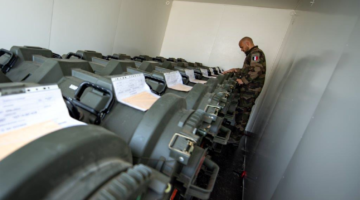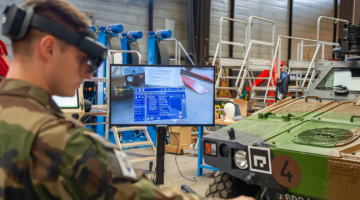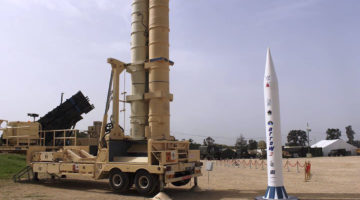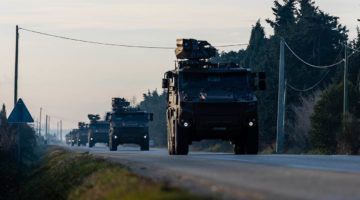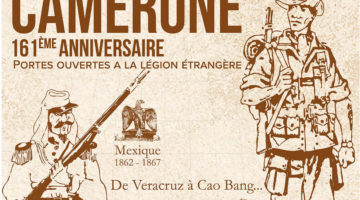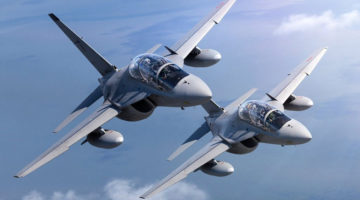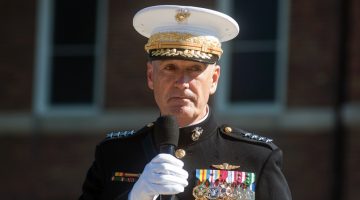(DefenseOne.com) By Peter Zwack, former U.S. senior U.S. defense attache to Russia – US and Russian Military Leaders Are Meeting Again, Breaking a Long and Dangerous Drought
Over three years had passed without direct senior-level contact between the world’s preeminent nuclear powers.
The military leaders of the world’s most lethal nuclear-tipped states met in February, the first such meeting in three years. The two generals got together again earlier this month, once more in relative obscurity that belied their meetings’ tremendous importance.
Long projected, but politically and geographically difficult to finalize, the Feb. 16 meeting was a personal first for Gen. Joseph Dunford and Gen. Valery Gerasimov, respectively the U.S. Chairman of the Joint Chiefs of Staff and Russia’s chief of the General Staff. They met in Baku, Azerbaijan, and frankly but cordially discussed the overall diminished state of U.S. and Russian military relations, the need for better communications between key leaders, and ways to deconflict military activities that could inadvertently put both countries at risk.
Then, — remarkably, considering the overall difficult state of U.S. and Russian relations — Dunford and Gerasimov met again on March 7. This time, their two days of talks were hosted by the Chief of the Turkish General Staff, Gen. Hulusi Akar, in scenic Antalya. Serious discussions ensued in a conducive environment where the three senior generals also shared meals together. Their positions reflected the varied perspectives and hence different strategies their states pursued with a contentious array of regional allies, proxies, and adversaries that placed their forces in ever-closer, increasingly dangerous proximity in northern Syria, near the cities of Manbij and al Bab. This array includes Russians backing the Syrian government, the U.S. backing the Syrian Democratic Force comprising Arabs and Kurds, and Turks supporting Assad regime opposition while combating Kurdish fighters. All recognize the need to destroy ISIS and capture its de facto capital in Raqqa.
These important meetings occurred against the backdrop of a difficult and fractious U.S. political transition of power, made even thornier by Moscow’s disruptive cyber tampering with the recent U.S. presidential campaign, and a Russian resurgence beset by challenges internally and abroad.
Much else had changed since January 2014, when General Gerasimov and Gen. Martin Dempsey, then the JCS chair, met in Brussels to sign the now-canceled annual “Work Plan” of exchanges and exercises between the two militaries. As the senior U.S. military attache in Moscow at the time, I witnessed the entire meeting. While this encounter was also cordial, it reflected the steady post-“Reset” decline in relations that was occurring between our countries. The discussion addressed the deteriorating situation in Ukraine, as well as concerns about Afghanistan, Central Asia, Syria, missile defense, and the spread of Islamist extremist terror, all issues still of contemporary concern for both our nations. Additionally, both military leaders agreed for the need to continue military-to-military exchanges at different levels, an effort that understandably died in February 2014 after the pro-Russian Yanukovych regime in Ukraine collapsed, precipitating Russia’s stealth invasion and illegal annexation of Ukraine’s Crimea and non-attributed operations supporting proxies in eastern Ukraine. Since then, the two militaries have barely communicated, mostly to deconflict air operations in and around Syria. Just a few terse phone calls were exchanged by the senior generals during these long three years. This lack of contact, less even than during the height of the Cold War, is dangerous to both nations vulnerable to a crisis at the speed of cyber.
Since Dempsey and Gerasimov last met in early 2014, the Russian military has evolved both materially and doctrinally, despite a major international sanctions regime, severe ruble inflation, and fallen oil prices emptying Russia’s coffers. (…)
READ FULL STORY >>> www.defenseone.com
Photo © Petty Officer 2nd Class Dominique A. Pineiro/U.S. Navy (as published in above-quoted reference)

